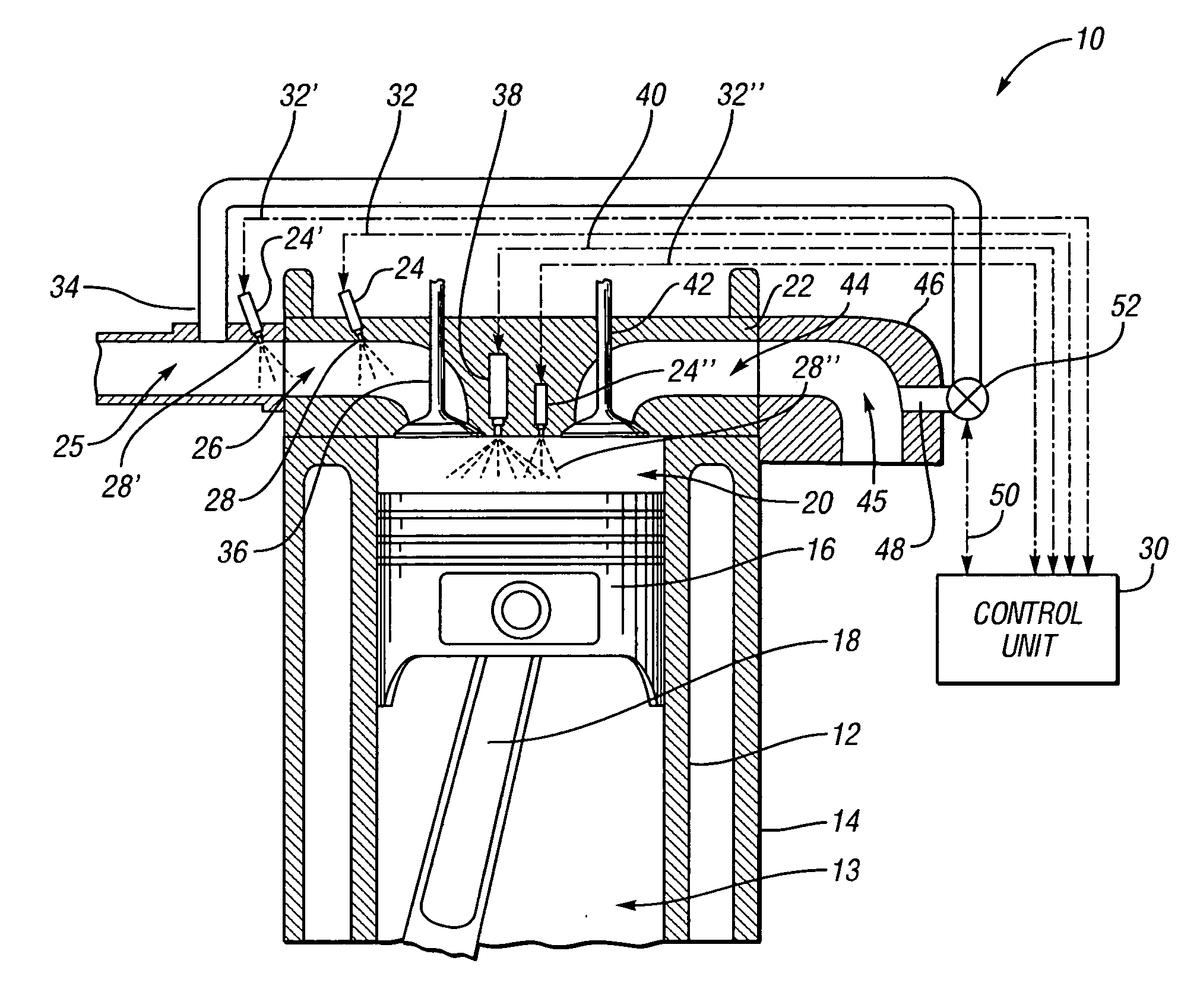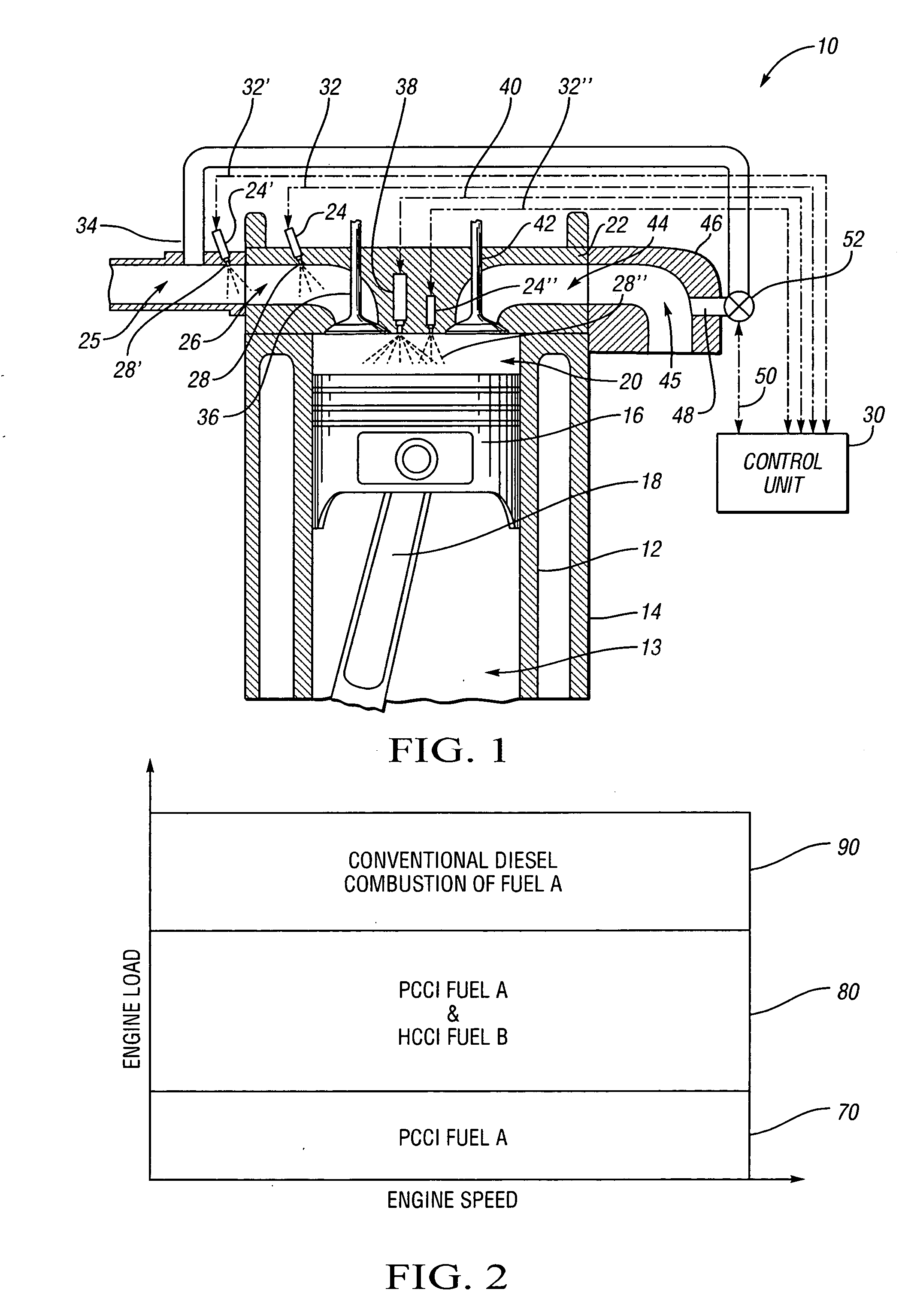Compression-ignited IC engine and method of operation
a technology of combustion engine and combustion chamber, which is applied in the direction of machines/engines, electrical control, mechanical equipment, etc., can solve the problems of high nox emissions in the exhaust stream, engine damage, and spark-ignited engines that may be somewhat inefficient, and achieve low emissions and high efficiency
- Summary
- Abstract
- Description
- Claims
- Application Information
AI Technical Summary
Benefits of technology
Problems solved by technology
Method used
Image
Examples
Embodiment Construction
[0020] Referring to FIG. 1, this figure presents an improved compression-ignited internal combustion engine 10 that is capable of operating in a premixed charge compression ignition mode over a much greater range of engine load conditions without producing excessive noise, soot emissions, and NOx emissions. This expanded range is facilitated by the use a dual fuel injection strategy. The compression ignition internal combustion engine 10 is characterized by a cylinder liner 12 enclosed by a cylinder case 14 and defining a cylinder bore 13 which reciprocally houses a piston 16. The piston 16 is connected to one extreme of the connecting rod 18. When the piston 16 is near TDC of the compression stroke, the bowl in the piston 16 forms a combustion chamber 20 with the cylinder head 22.
[0021] During the intake stroke of piston 16, a measured amount of fuel B will flow from the secondary fuel injector 24 into the inlet port 26 defined by the cylinder head 22. The secondary fuel injector ...
PUM
 Login to View More
Login to View More Abstract
Description
Claims
Application Information
 Login to View More
Login to View More - R&D
- Intellectual Property
- Life Sciences
- Materials
- Tech Scout
- Unparalleled Data Quality
- Higher Quality Content
- 60% Fewer Hallucinations
Browse by: Latest US Patents, China's latest patents, Technical Efficacy Thesaurus, Application Domain, Technology Topic, Popular Technical Reports.
© 2025 PatSnap. All rights reserved.Legal|Privacy policy|Modern Slavery Act Transparency Statement|Sitemap|About US| Contact US: help@patsnap.com


